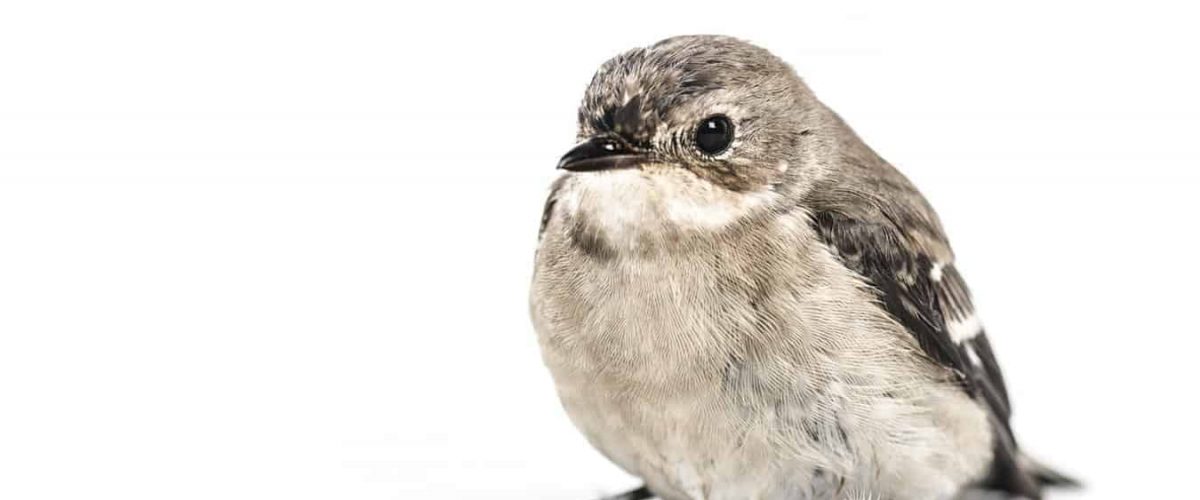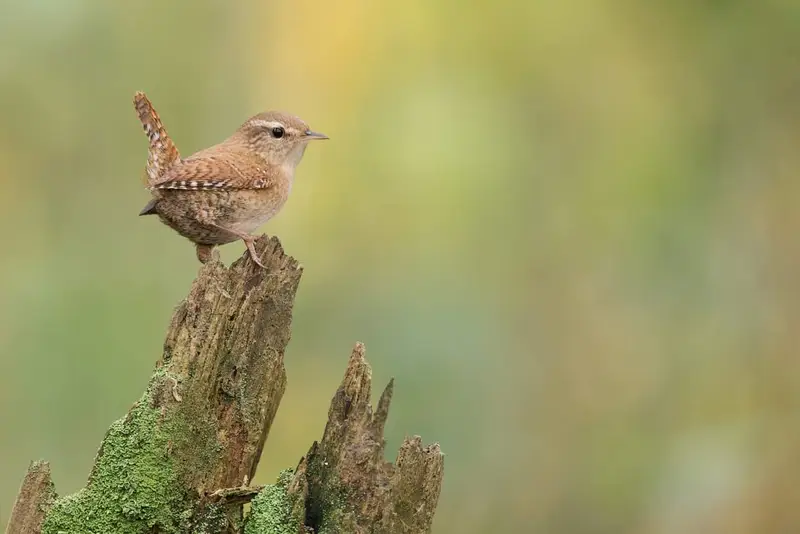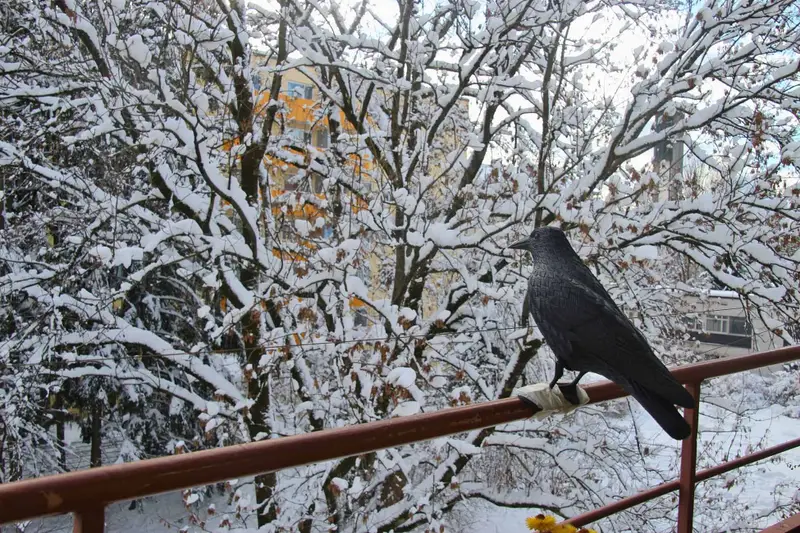
Chickadees, despite their strange name, are a staple of the countryside across all of North America. The small bird is a part of the tit family.
Table of Contents
ToggleWatching a chickadee flit about the garden is a real pleasure; it’s rapid movements combined with a curious nature make it a delightful little bird to observe. Naturally, you might be looking for a few ways that you can encourage chickadees to take rest in your garden, giving you a chance to get to know the birds in a much more intimate fashion.
One thing that draws people to chickadees is that though they are wild animals, they can be easily hand trained. This means that you can build a trust between yourself and the bird, which will eventually lead to them eating directly from your hand!
Good news – there are a few sure-fire ways to attract the beautiful little bird into your yard. Let’s take a look at 5 of the best tips, guaranteeing you a few new friendly feathered visitors:
1. Clean Feeders
One of the quickest, easiest and cheapest ways to attract chickadees into your yard is with the use of a birdfeeder; these birds are always on the lookout for their favourite seeds and nuts, making them one of the most reliable sources of attraction for the vibrant creature.
There’s an abundance of different bird feeders on the market, so it’s important to know which ones are the most effective. Chickadees are known to prefer tube feeders, platform feeders and hopper feeders – anything that’s open and easy to access. You won’t have much luck with enclosed birdfeeders – but these are great at attracting other species!
For the best results, you should use sunflower seeds and peanuts. Chickadees also love suet, too – though you may need a specific suet feeder to make the most of it.
2. Shelter
As with any other small bird, if you hope to bring them into your yard, you will need to provide some form of shelter. The chickadee generally prefers bushy evergreen shrubs that will provide protection and camouflage year-round.
One of their preferred habitats is a conifer tree – the ones often displayed around Christmas! You can buy these pre-grown, or you can grow them yourself – just be warned that the latter might take a lot of time.
You can build or install roosting boxes into an evergreen conifer, which will provide the necessary protection that a chickadee will need throughout the colder months. If possible, you should also maintain a dense thicket or a thick row of shrubbery that can provide the bird with a quick hiding space should they ever feel threatened.
3. Nesting
Chickadees are referred to as ‘cavity-nesters’, meaning that they generally find cavities (such as holes in dead trees) to roost in. Good news – a regular birdhouse replicates the conditions of a cavity nest, providing a safe place for your chickadees to nest.
To further increase the chance of visiting chickadees, you should supply birdhouses or boxes in which they can nest. They’re relatively inexpensive, and you can plant multiple boxes at the same time. For added effect, try placing them near your feeders!
4. 'Phishing'
As with any other small bird, if you hope to bring them into your yard, you will need to provide some form of shelter. The chickadee generally prefers bushy evergreen shrubs that will provide protection and camouflage year-round.
One of their preferred habitats is a conifer tree – the ones often displayed around Christmas! You can buy these pre-grown, or you can grow them yourself – just be warned that the latter might take a lot of time.
You can build or install roosting boxes into an evergreen conifer, which will provide the necessary protection that a chickadee will need throughout the colder months. If possible, you should also maintain a dense thicket or a thick row of shrubbery that can provide the bird with a quick hiding space should they ever feel threatened.
5. Clean Water Bath
Just like you and I, a chickadee absolutely MUST have access to a clean water supply. It allows them to not only keep their feathers clean but also acts as a place for them to drink. Bird baths are perfect for this as they offer a fresh water supply and are aesthetically pleasing in any yard!
Chickadees will not drink or bathe in unclean water, as it can spread illness or disease. You should adhere to clean the water on a daily basis, taking steps to deep clean the bath if it ever gets especially dirty.
Why do Chickadees peck on wood?
Some birds are known for their habit of pecking on wood (we’re looking at you, woodpeckers…), though many people don’t realise that chickadees also fit into this category. Though they’re usually much quieter and significantly less persistent than a woodpecker, a chickadee can still become something of an annoyance.
Chickadees do have a reason for pecking on wood, though; as mentioned above, they’re cavity-nesters. In the wild, cavities are difficult to come by, and the natural ones that do occur are likely to be already taken.
The bird needs a small cavity in order to nest, so in order to make sure that there is a suitable roosting place, a chickadee will create one themselves. By pecking into the wood, they’re essentially hollowing out a portion of the wood that can then be turned into a nest!
Unlike other birds, chickadees aren’t sapsuckers. They don’t rely on the sap from the wood to sustain themselves, which is why their beaks aren’t shaped like that of a sapsucking woodpecker.
Due to their smaller beaks, a chickadee is unable to drill into thick, dense wood. They typically target thin or decaying trees, where they can quickly hollow out the first few layers of wood.
How do chickadees survive winter?
Some birds are known for their habit of pecking on wood (we’re looking at you, woodpeckers…), though many people don’t realise that chickadees also fit into this category. Though they’re usually much quieter and significantly less persistent than a woodpecker, a chickadee can still become something of an annoyance.
Chickadees do have a reason for pecking on wood, though; as mentioned above, they’re cavity-nesters. In the wild, cavities are difficult to come by, and the natural ones that do occur are likely to be already taken.
The bird needs a small cavity in order to nest, so in order to make sure that there is a suitable roosting place, a chickadee will create one themselves. By pecking into the wood, they’re essentially hollowing out a portion of the wood that can then be turned into a nest!
Unlike other birds, chickadees aren’t sapsuckers. They don’t rely on the sap from the wood to sustain themselves, which is why their beaks aren’t shaped like that of a sapsucking woodpecker.
Due to their smaller beaks, a chickadee is unable to drill into thick, dense wood. They typically target thin or decaying trees, where they can quickly hollow out the first few layers of wood.
How do chickadees survive winter?
Chickadees do not migrate; they stay put throughout the winter, simply switching their diet to maintain a consistent food source.
Birdwatchers may have noticed the young of the species travelling large distances, similar to migration – this isn’t actually recognised as a migration, however, as the activity is irregular and inconsistent. In some cases, the young bird will travel a great distance, but stay within the country or continent.
Young chickadees will only follow this pattern (called an irruption) if reproduction rates are high. Rather than staying to compete for food, the young birds will relocate to an area where resources are in abundance.
In the winter, a chickadee’s diet will consist mainly of nuts, fruits and berries. Try filling your feeders with sunflower seeds in the winter!
Here are 10 facts about Chickadees!

More Articles.

How to Attract Wrens to your Yard?
Wrens are adorable birds that many people enjoy having in their yards. These birds are

How to Attract Birds to a Window?
All birds can be attracted to a window feeder. Some will require bright colors to

North American Birds with a White Breast (18 Species with Pictures and Sounds)
Canada and America are filled with many wonderful birds with a white breast – in

About Us
We are avid bird-watchers who recently retired, allowing us more time to travel the world. Fortunately, we have managed to visit numerous countries around Europe, Asia, and America. Watching and photographing birds has been a passion for many years and we are making the most of the extra time on our hands!


